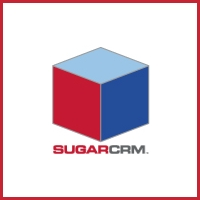Beans come in a variety of shapes, colors and tastes. These
staples are often overlooked in restaurants and home kitchens alike.
Perhaps, this is, in part, due to the popularity of restaurant-style
refried beans, which often contain lard, despite the fact that refried
beans can be prepared in a more health conscious way. Get out your chef
apparel and prepare to learn more about the magic of beans.
While you're putting on black aprons and letting you beans soak, let's talk about a few of the health benefits before separating the pinto beans from the garbanzo beans. Looking over the Dietary Guidelines for Americas, there are seven recommendations for a healthy diet that will reduce the possibility of many diseases. It is no surprise to the bean lovers of the world that beans meet six of the seven suggestions.
At lunch hours across the country, men and women in business uniforms can be found enjoying bean-based lunches in soups to spreads. But what is it in beans that make them good for you? First of all, beans possess an abundance of soluble fiber and are naturally low in fat. Soluble fiber has been proven to assist with the lowering of cholesterol. Beans have also been proven to help people with diabetes. The growing obesity epidemic in the United States has also lead to a parallel increase in coronary heart disease and high blood pressure. Beans also have been proven effective in fighting colon cancer. Current data shows that by including beans as a part of your daily meals delays feelings of hunger and makes people feel full for longer periods of time.
With the multi-million dollar diet industry offering many costly means to weight loss, the bean remains a cost effective friend. A bag of dry beans at your local grocery store can be purchased for just a few dollars; and a pot of beans will easily last an entire week. But in addition to the myriad of health benefits, beans provide a cost effective alternative to meat. Beans are such a powerhouse of nutrition that the USDA Food Pyramid Guide has placed them in the both the vegetable group and the lean meat and nuts group.
To get started on your pot of beans you will first want to rinse the dry beans thoroughly. Next soak the beans in cold water. (Note: The longer you soak the beans, the faster they will cook.) When you have the time, soak the beans overnight. From black beans to pinto beans, you have the tools to get started.
While you're putting on black aprons and letting you beans soak, let's talk about a few of the health benefits before separating the pinto beans from the garbanzo beans. Looking over the Dietary Guidelines for Americas, there are seven recommendations for a healthy diet that will reduce the possibility of many diseases. It is no surprise to the bean lovers of the world that beans meet six of the seven suggestions.
At lunch hours across the country, men and women in business uniforms can be found enjoying bean-based lunches in soups to spreads. But what is it in beans that make them good for you? First of all, beans possess an abundance of soluble fiber and are naturally low in fat. Soluble fiber has been proven to assist with the lowering of cholesterol. Beans have also been proven to help people with diabetes. The growing obesity epidemic in the United States has also lead to a parallel increase in coronary heart disease and high blood pressure. Beans also have been proven effective in fighting colon cancer. Current data shows that by including beans as a part of your daily meals delays feelings of hunger and makes people feel full for longer periods of time.
With the multi-million dollar diet industry offering many costly means to weight loss, the bean remains a cost effective friend. A bag of dry beans at your local grocery store can be purchased for just a few dollars; and a pot of beans will easily last an entire week. But in addition to the myriad of health benefits, beans provide a cost effective alternative to meat. Beans are such a powerhouse of nutrition that the USDA Food Pyramid Guide has placed them in the both the vegetable group and the lean meat and nuts group.
To get started on your pot of beans you will first want to rinse the dry beans thoroughly. Next soak the beans in cold water. (Note: The longer you soak the beans, the faster they will cook.) When you have the time, soak the beans overnight. From black beans to pinto beans, you have the tools to get started.



